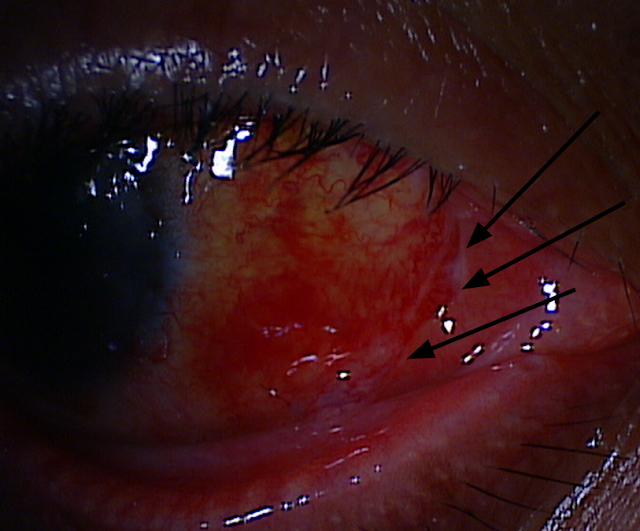A pterygium (pterygia plural) is a fleshy growth on the surface of the eye that develops from inflammation and abnormal cells of the conjunctiva (the semi-clear covering over the white part of the eye) that crosses onto the cornea (the window of the eye).
Cumulative sun exposure (UV) from childhood is the biggest risk factor. Genetics, smoking, poor health adds to risk. They can become cosmetically unappealing and can cause symptoms of dryness, burning, redness, reflex tearing, and eye pain.
There are many ways to remove a pterygium, but the best way is removing the growth and placing a patch graft of the patient’s own conjunctiva (usually taken from above the pupil area/under the upper eyelid). Amniotic membrane is often used either under or over the conjunctival graft to help the healing process and avoid scarring.
The biggest issue so far has been the risk of recurrence. No one wants this growth to return.
Now that our recurrence rates are the lowest in history (published reports have pterygium recurrence between 0-30% with more advanced techniques as noted above at the lower end of recurrence risk). many surgeons are now starting to focus on how to achieve the best cosmetic outcome.
We are looking at the best way to avoid the scarring you can see near the nose in the patient who had surgery below in Texas by a high volume pterygium surgeon. There is no recurrence at 1month, but a curvilinear scar (pointed out by the black arrows) is developing and will lead to a noticeable scar that does not look “natural.”
There is a tiny suture we had to put in to prevent further dehiscence of the graft from the surgery in Texas: can you see it?
What is the best way to prevent this from happening? We have some ideas that we are beginning to research. By putting the amniotic membrane on the surface of the conjunctival autograft, for instance, we have started noticing the cosmetic appearance looks better. This is the research we are actively pursuing. We have some other interesting ideas as well which could revolutionize the way pterygium surgery is performed.
Sandra Lora Cremers, MD, FACS
I enjoyed this blog post on what pterygium surgery was like for this person:
http://francis-ritchie.com/after-pterygium-removal-surgery/



